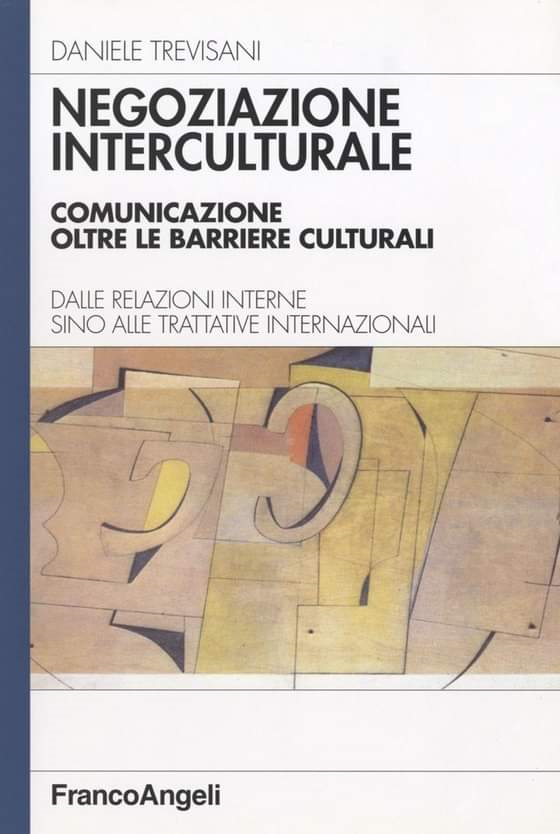© Article translated from the book “Negoziazione interculturale, comunicazione oltre le barriere culturali” (Intercultural Negotiation: Communication Beyond Cultural Barriers) copyright Dr. Daniele Trevisani Intercultural Negotiation Training and Coaching, published with the author’s permission. The Book’s rights are on sale and are available for any Publisher wishing to consider it for publication in English and other languages except for Italian and Arab whose rights are already sold and published. If you are interested in publishing the book in English, or any other language, or seek Intercultural Negotiation Training, Coaching, Mentoring and Consulting, please feel free to contact the author from the webstite www.danieletrevisani.com
__________
Let’s continue with the conversation analysis. In this article we will focus on various aspects of intercultural conversation and its management, because a good negotiator must always have the situation in check, without leaving even the smallest conversational detail to chance.
Rules of Courtesy and Respect for Roles
Intercultural communication, both on a diplomatic and on a business level, requires us to pay a particular attention to rules of courtesy, to the respect for roles and to the recognition of others’ identities.
On an interpersonal perspective, western urban cultures tend to “reduce distances” and to treat people as equals. From an anthropological point of view, these cultures are defined as low-context cultures. Many business and diplomatic cultures, however, are generally high-context cultures; respecting distances and roles, while mantaining boundaries until the other party offers permission to move to a more friendly and less formal level, is very important.
Moreover, in high-context cultures more space is given to allusion, rather than to direct affirmations, as occurs in low-context cultures, which are more informal. In addition to that, high-context cultures use more parables, proverbs, understatements and antiphrases (negative statements), while low-context cultures prefer to create direct relationships, using high tones, overstatements, positive and explicit expressions.
Some general rules of intercultural negotiation are therefore dictated by common sense, while others must be acquired by people who are informed about the local culture. The basic rules of courtesy are:
- asking informed individuals how people want to be called
- asking people directly how they want to be called (in the absence of informants);
- avoiding nicknames or avoiding using first names without the direct permission of the subject;
- using titles such as “Mr.” or “Miss.”, or other courtesy titles, especially with older interlocutors;
- respecting roles (eg: President, Director, etc.) even with younger people who hold institutional roles;
- avoiding interrupting.
Rules of Deference and Demeanor
The rules of deference and demeanor are expressed both verbally and through non-verbal communication – for example by bowing a bit while shaking hands – generally avoiding excessive manifestations. In any case, it is essencial to rember to inquire about which behaviors are normal and which are rather offensive in the other culture.
Taking cultural precepts for granted, without knowing how to understand the situation, can easily produce mistakes and misunderstandings. The rules of courtesy are therefore to be evaluated with extreme attention to the context.
The axes that connect two subjects engaged in conversation are called conversation lines.
- To interrupt two people talking means breaking their imaginary line of conversation.
- To let another person take the turn means establishing a line of conversation between yourself and that other person.
- To give two people something to compare means establishing a line of conversation between those two subjects.
The lines of conversation can be both evident (through the verbal system) and subtly disguised (through the non-verbal system, like signals, gestures and nods).
Turn-taking Management
Speaking turns management mechanisms are extremely complex, although practiced by everyone every day.
The information flow that comes from the interlocutors is extremely valuable, and requires everyone to abandon a “strategy that floods information“, typical of aggressive sales, moving towards a listening strategy.
The turn-taking management training develops the negotiator’s skills in:
- recognizing turn-taking management mechanisms;
- knowing how to enter the conversation while respecting rules;
- identifying moments and strategies, that can help you enter and leave the conversation;
- creating adequate repair moves, while facing moves that can be perceived as offensive;
- applying a conversational leadership, that consists in taking your turn consciously by becoming a “turn-taking” manager.
Content Management
The turn-taking concept mainly concerns the “person who’s talking”, while the content management mainly regards “the topic of conversation”.
First of all, we have to distinguish the skills of topic setting (fixing conversational topics), from those of topic shifting. Both strategies are part of what we call “content management conversation skills“.
Topic shifting and content management skills include:
- the ability to recognize “what we are talking about”: details, visions, aspirations, requests, offers, datas, emotions.
- the ability to create different phases in the conversation, for example by knowing how to produce an adequate small talk, or how to warm up the conversational atmosphere; or by knowing how to distinguish between the opening phase, used for gathering information, and the closing phase, when a conclusion is reached;
- the ability to move the negotiation along desired or predetermined axes of content, following an agenda or a mental scheme;
- the ability to change the conversational contents, based on what emerges during the interaction (contextual changes, situational adaptations, etc.).
Conversation re-focusing is a “hard” variant of content management and topic-shifting techniques. Re-centering consists of bringing the conversation back to a topic that the counterpart is not considering, or wants to avoid, or simply cannot grasp.
The act of re-focusing can be preceded and followed by appropriate repair moves (repair, apology, anticipation, etc.). In extreme cases, the act of re-centering can also take place without resorting to moves of repair, thus generating a pre-conflict situation that forces the counterpart to choose whether to accept a role of conversational submission or not, shifting to an open conflict.

© Article translated from the book “Negoziazione interculturale, comunicazione oltre le barriere culturali” (Intercultural Negotiation: Communication Beyond Cultural Barriers) copyright Dr. Daniele Trevisani Intercultural Negotiation Training and Coaching, published with the author’s permission. The Book’s rights are on sale and are available for any Publisher wishing to consider it for publication in English and other languages except for Italian and Arab whose rights are already sold and published. If you are interested in publishing the book in English, or any other language, or seek Intercultural Negotiation Training, Coaching, Mentoring and Consulting, please feel free to contact the author from the webstite www.danieletrevisani.com
__________
For further information see:
- Studio Trevisani Academy’s Webstite For Business Training, Coaching and Mentoring, in Italian
- Dr. Daniele Trevisani’s Website in Italian
- Dr. Daniele Trevisani’s Website in English
- Comunicazioneaziendale.it – Italian website on Business Communication
- Medialab Research Cultural Association for Communication Research
- Dr. Daniele Trevisani Linkedin Profile in English
- Facebook Channel
- YouTube Channel



